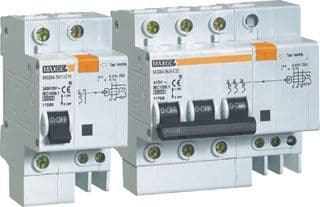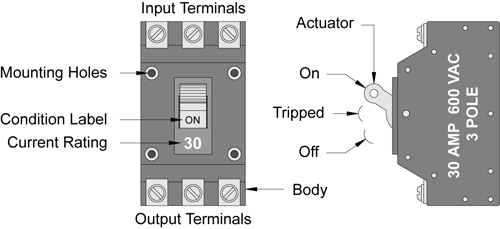

This is the highest fault current that the MCCB can handle without being permanently damaged. Operating Short Circuit Breaking Capacity (Ics) The standard size for impulse testing is 1.2/50µs. This value determines the ability of the MCCB to withstand transient over-voltages. This value is the transient peak voltage the circuit breaker can withstand from switching surges or lightning strikes. It is normally the same as or close to the system voltage. This value is the rated voltage for the continuous operation of MCCB. The rated voltage of MCCB is typically lower than this value to provide a safety margin. This value indicates the maximum voltage which the MCCB can resist in lab conditions.

This value can be adjusted, to a maximum of the rated frame current. The rated current value determines when the MCCB trips due to overload protection. This value determines the breaker frame size. This rated frame current defines the upper limit of the adjustable trip current range. The maximum current that the MCCB is rated to handle. Some of the common parameters are explained below: Rated Frame Current (Inm) MCCB manufacturers are required to provide the operating characteristics of the MCCB. To combat this, MCCBs have internal arc dissipation mechanisms to quench the arc.ĭeciphering MCCB Characteristics and Ratings An arc can be created when the contact opens.
#What does it mean mccb circuit breaker manual#
In addition to tripping mechanisms, MCCBs can also be used as manual disconnection switches in case of emergency or maintenance operations. However, when a short circuit fault occurs in the circuit, a large current begins to flow through the solenoid and, as a result, a strong electromagnetic field is established which attracts the trip bar and opens the contacts. During normal operation, the electromagnetic field generated by the solenoid coil is negligible. The MCCB contains a solenoid coil which generates a small electromagnetic field when current passes through the MCCB. MCCBs provides an instantaneous response to a short circuit fault, based on the principle of electromagnetism. This time delay allows the circuit to continue to operate in these circumstances without tripping the MCCB.Įlectrical Fault Protection against short circuit currents

The thermal protection of the MCCB will typically have a time delay to allow a short duration of overcurrent which is commonly seen in some device operations, such as inrush currents seen when starting motors. Eventually, the contact will bend to the point of physically pushing the trip bar and unlatching the contacts, causing the circuit to be interrupted. When the current exceeds the trip value, the bimetallic contact will start to heat and bend away due to the different thermal rate of heat expansion within the contact. During the normal operating conditions, the bimetallic contact will allow the electric current to flow through the MCCB. This component is essentially a bimetallic contact: a contact which consists of two metals that expand at different rates when exposed to high temperature. Overload protection is provided by the MCCB via the temperature sensitive component.


 0 kommentar(er)
0 kommentar(er)
